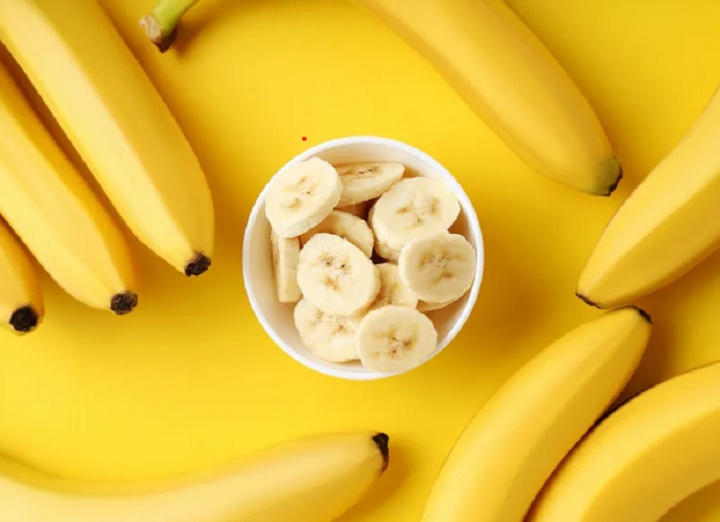Bananas are a type of fruit that contains many beneficial nutrients for digestion and cardiovascular health. In addition, bananas are also a convenient snack for people on a diet or who exercise regularly…
Many people wonder whether they should choose curved or straight bananas, and whether there is a difference in quality between them.
In reality, the shape of a banana is related to its developmental environment. In particular, light has a crucial impact on the “maturity” of each banana.
When they are young, bananas are usually straight. As they grow older, they tend to curve upwards towards areas with better light sources. Because bananas are arranged in clusters and all grow in the same direction, the bananas gradually become curved.
Therefore, when you see a bunch of ripe bananas with curved shapes, it is a sign that they have ripened naturally and gone through normal development. They have received enough sunlight, so their flavor will be sweeter.
The straight shape of bananas is usually caused by two reasons. First, bananas develop in conditions with poor lighting and do not face areas with much sunlight, so they do not curve. Second, bananas are harvested prematurely.
Harvesting early helps bananas maintain a certain level of firmness, avoiding situations where bananas are damaged, broken, or crushed during transportation. People usually harvest bananas when they are “half ripe”, and they will ripen gradually in the process of reaching consumers. Additionally, there are cases where bananas are artificially ripened. These bananas are usually less sweet compared to naturally ripened ones.
So now you have the answer to the question of whether to choose curved or straight bananas, right? Choose naturally curved bunches of bananas to ensure safety and enjoy their delicious aroma.
Differentiating between naturally ripe bananas and artificially ripened bananas:
According to experts, choosing good, naturally ripe fruits is not difficult. In many cases, you only need to use your hands and eyes to determine if the fruits have been soaked or sprayed with chemicals. To choose fresh bananas, pay special attention to the following characteristics:
Observing the stem:
If the stem of the banana is fresh, natural in color, slightly sticky, easily bendable, and the fruit feels firm when held, then it is a safe fruit and has not been soaked or sprayed with chemicals. Soaked bananas are usually under-ripe and take a long time to ripen.
Observing the banana peel:
Naturally ripened bananas usually have a round, tight skin, a deep yellow color, and are soft to the touch. The outer skin usually has uneven brown spots, and the color is darker in ripe areas. It also has a distinctive aroma (strong, sour, and unpleasant if too ripe). Moreover, naturally ripened bananas are unevenly ripe.
Artificially ripened bananas may still ripen unevenly, but inside there are still areas that are soft, with unripe seeds, a dull stem, and dark spots, and they do not have a pleasant aroma. Chemically ripened bananas have a bright, eye-catching yellow color, a smooth skin, and slightly hard when squeezed.
In addition, when peeling a naturally ripened banana, you will feel that it is uniformly soft, with a slight elasticity when pressed, not hard or firm like chemically ripened bananas.
Based on the fruit’s flesh:
When peeling and eating a chemically ripened banana, it still has the texture of raw rice and a bland taste, even slightly bitter. Natural ripe bananas never have a bitter taste, only a sweet, pleasant aroma.
In addition, consumers should choose bunches of bananas that are unevenly ripe, meaning they have some ripe and some unripe fruits, even if the appearance is not very beautiful. These are naturally ripened bananas, so when eaten, they never have a bitter or unpleasant taste like bananas ripened using chemicals.
According to vtc.vn































